There's a Building in Beit Shemesh That Muslims Believe Is a Super Important Christian Tomb
And it's right over the hill from where Christians believe the rabbi of this person was buried.
Dear Healthy Jew,
Last week I shared with you about the strangely growing asparagus shoots in the burnt knoll across the street from Yeshivat Lev HaTorah.
Now actually there’s a bit of fascinating history about that place. Remember, this is Israel.
See this broken building?
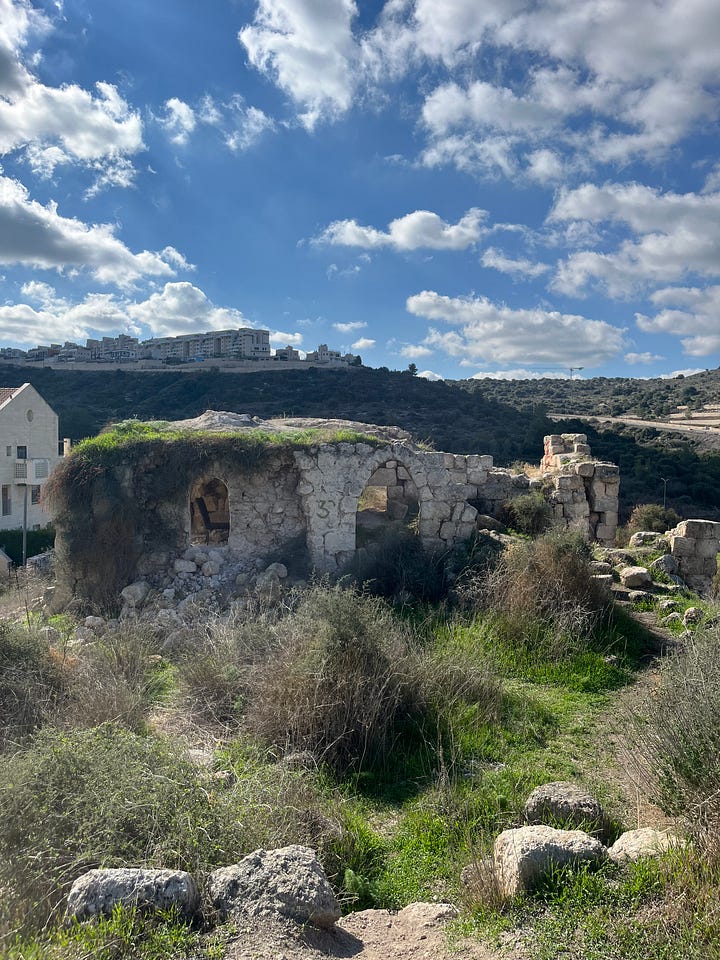
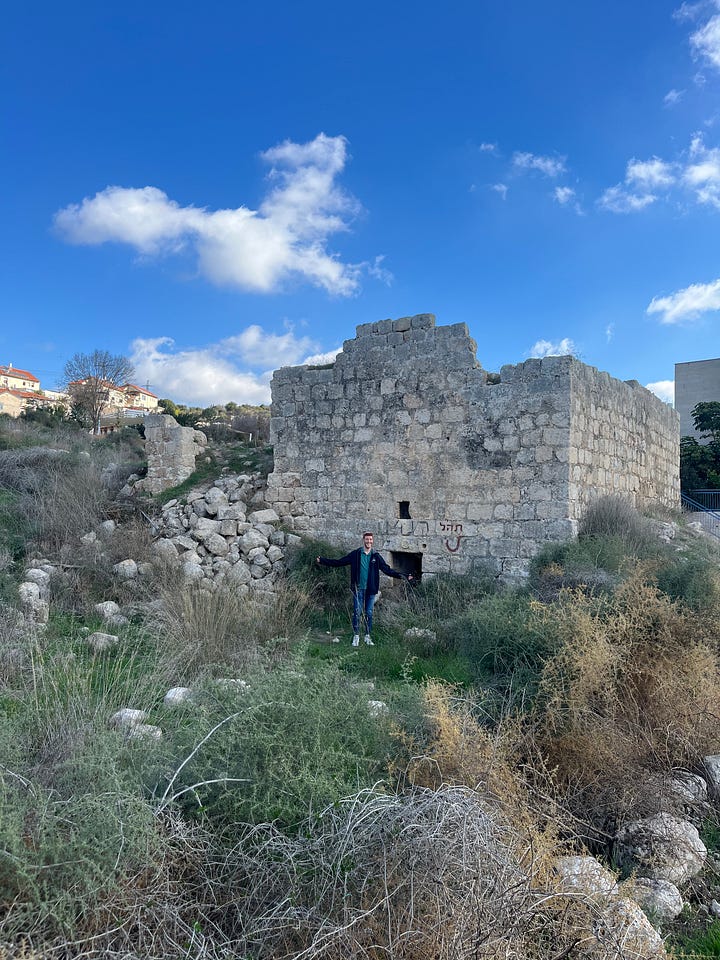
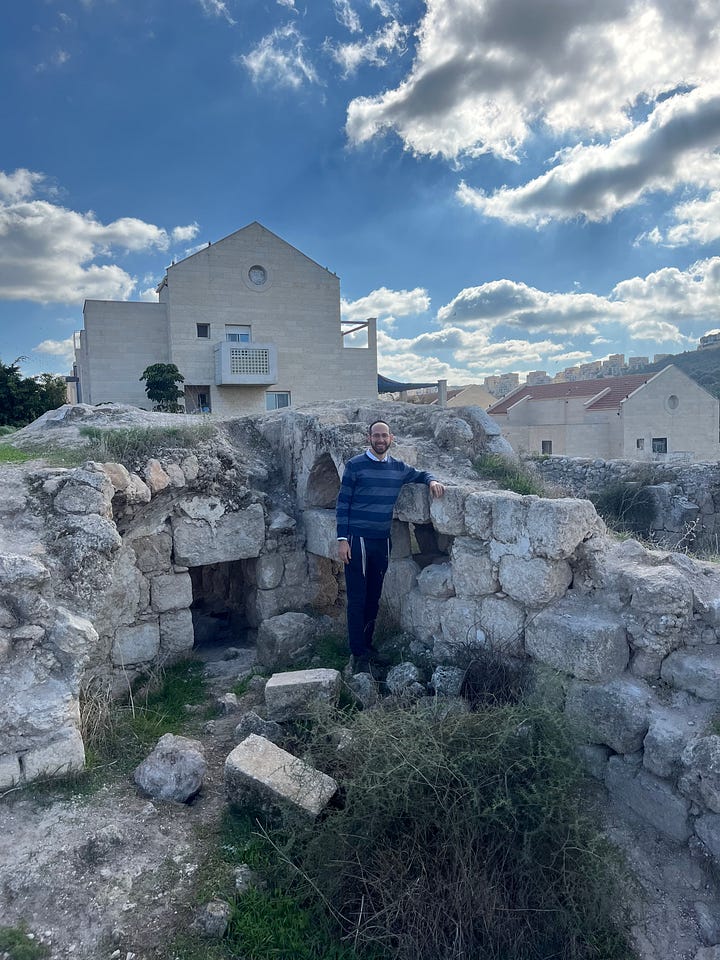
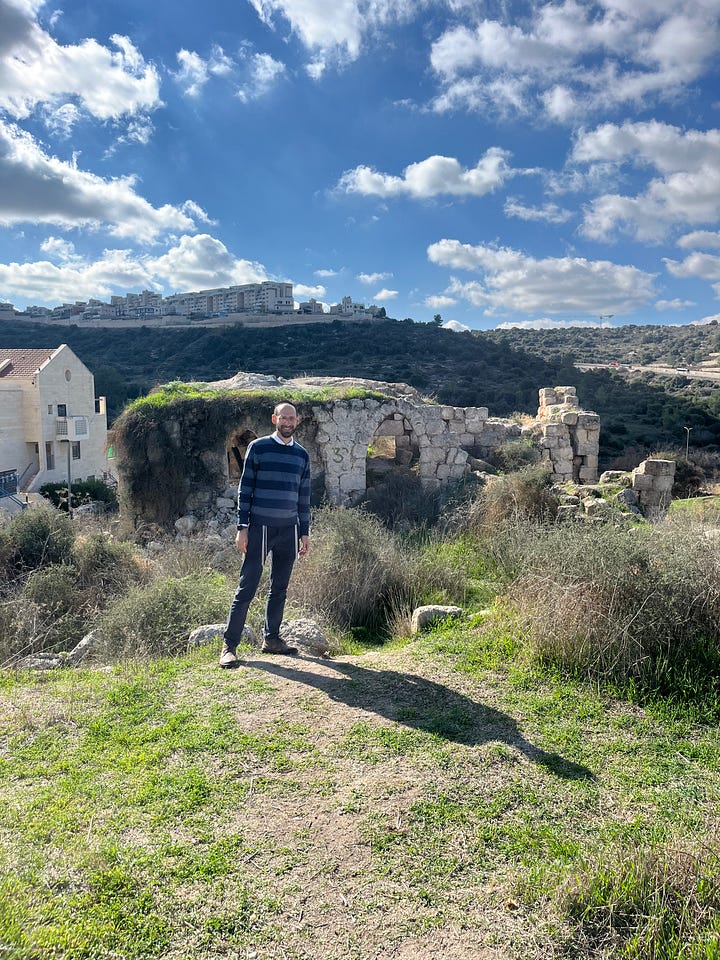
It’s called Nebi Bulus, which is Arabic for Paul the Apostle, the fellow who wrote much of the New Testament. According to Islamic tradition, Paul was buried here. Indeed, relatively recent archeological digs at the site suggest the building is from the Abbasid period, that is around 1000 years ago - the time that such an Islamic tradition would have been disseminated.
So why is the place a ruined dump in the middle of an overgrown field right outside of the Ramat Shilo section of Ramat Bet Shemesh? Apparently because according to the Christian tradition - which predates the Islamic one by almost a millennia - Paul is buried in the heart of Rome.
But I still think Nebi Bulus is an interesting place, even for Jews. Many human beings, over many generations, came here to visit and pray. There is even evidence of human settlement here back to the Hellenist and Roman periods, and pottery fragments dating from early antiquity.1
At some point in history, Jews too probably walked through this hill. Perhaps the road in the valley right below - the one I walk on every day to yeshiva - is the same one that our ancestors living in the area took to their yeshivas and homes.

An ancient site doesn’t need to be attached to a particularly holy Jewish historical figure or story in order to be important. There’s tremendous value in walking with awareness around places in Israel - or anywhere - that were populated thousands of years ago, because we experience how our lives are rooted in those who came before us, and how we are the roots for those who will come after. We aren’t God’s only gift to history; we’re a small part of a story that spans millennia.
Beit Jamal
There’s an interesting twist to the Nebi Bulus story. Only several miles north from this hill is this ancient - and still functioning - monastery called Beit Jamal. Christian tradition tells that the priest Lucian dreamt in 415 CE that this was the gravesite of Rabbi Gamliel, the first-century CE Mishnaic sage, who lived in the local township of Gamle.
Why would Lucian care to identify the gravesite of a Jewish rabbi? Because according to Christian tradition, Rabbi Gamliel was the teacher of Paul, and perhaps was a closet Christian himself.
Now, Rabbinic Jewish tradition won’t accept a positive relationship between one of our most esteemed Sages - a great-grandson of Hillel, no less - and early Christianity, but I don’t know why we must reject that he had a student who later became a follower of the Jewish Jesus.
Now isn’t it curious that the possible gravesite of Rabbi Gamliel is just up the road from the possible gravesite of his possible student Paul? Can it be that the two sites are part of a single community in which Rabbi Gamliel and his students lived and died?
If we look deeply at the story, however, I must admit there’s probably no connection. Remember, the tradition of Paul’s grave in Nebi Bulus is only Islamic, because the Christians have him buried in Rome. On the other hand, Bet Jamal is an exclusively Christian site, all the way from the Byzantines to today (except for a few hundred years during the Ottoman period).
But it’s not impossible. Perhaps the Islamic tradition of Nebi Bulus is based on an earlier Christian one, or maybe Paul just lived here but was buried in Rome. I really have no idea. But I still find it fascinating that I spend much of my day in a yeshiva that seems to be on a random suburban street but is really in between two places that hearken back to the ancient roots of the world’s three great monotheistic religions.
(To learn more about Nebi Bulus, in addition to the academic article linked above, see this more detailed blogpost.)
Thank you for reading Healthy Jew.
Here are 2 great paths to continue the journey:
Also check out this intro and index to explore hundreds of posts about our 3 Healthy Jew topics: Wellness with Wisdom, Land of Life (Israel), and Sensible Spirituality.
Finally, always feel free to reach out here with any comments, questions, or complaints:
I look forward to hearing from you!
Be well,
Rabbi Shmuel Chaim Naiman
“Previous excavations at the site exposed settlement remains from the Late Hellenistic, Early Roman, Byzantine, Abbasid and Mamluk periods, as well as fragments of Chalcolithic and Early Bronze Age II pottery vessels (ESI 17:88–90). At the foot of the hill potsherds assigned to the Middle Bronze Age and Iron Age II were collected.”




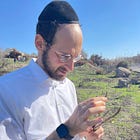

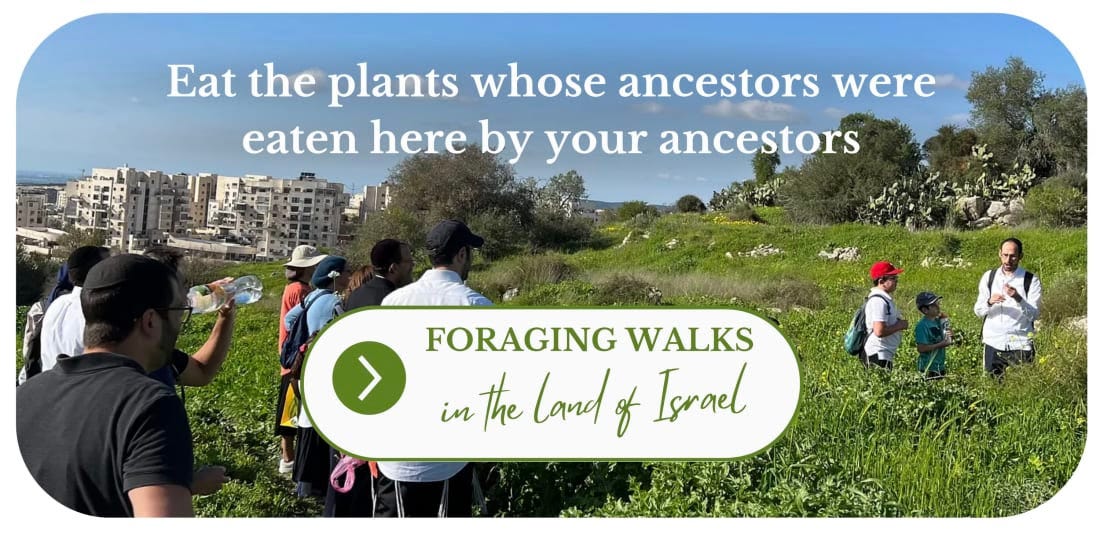


Wonderful to be honouring connections between different peoples! Especially when conflict seems endless. As you say, we're just a drop in the ocean of time. May we see better days. And I hope your foraging adventure this week goes well.
Thank You for a fascinating bit of history!